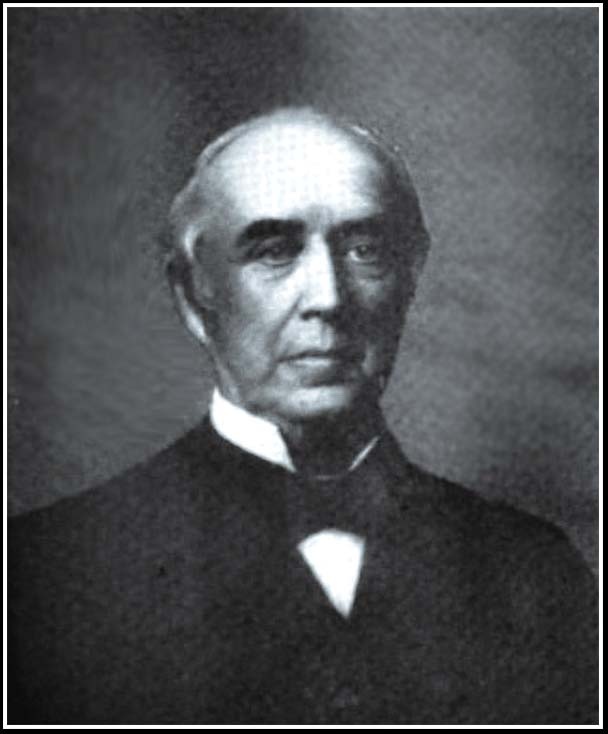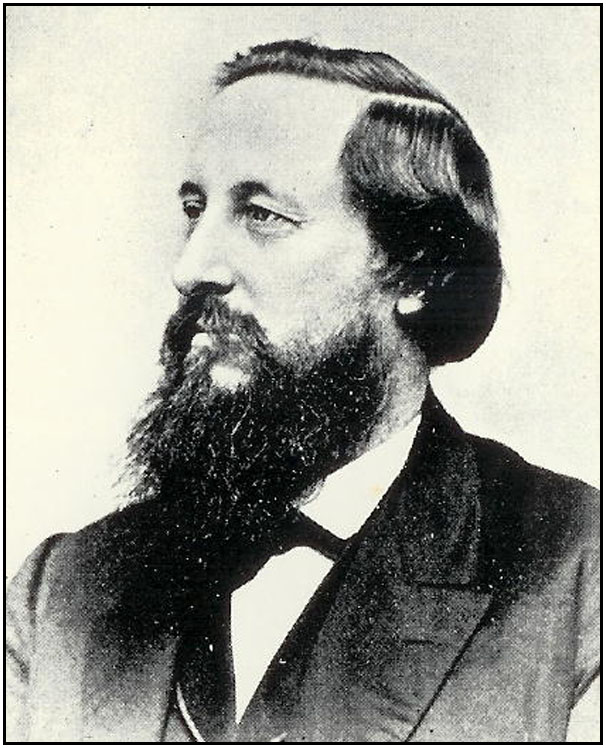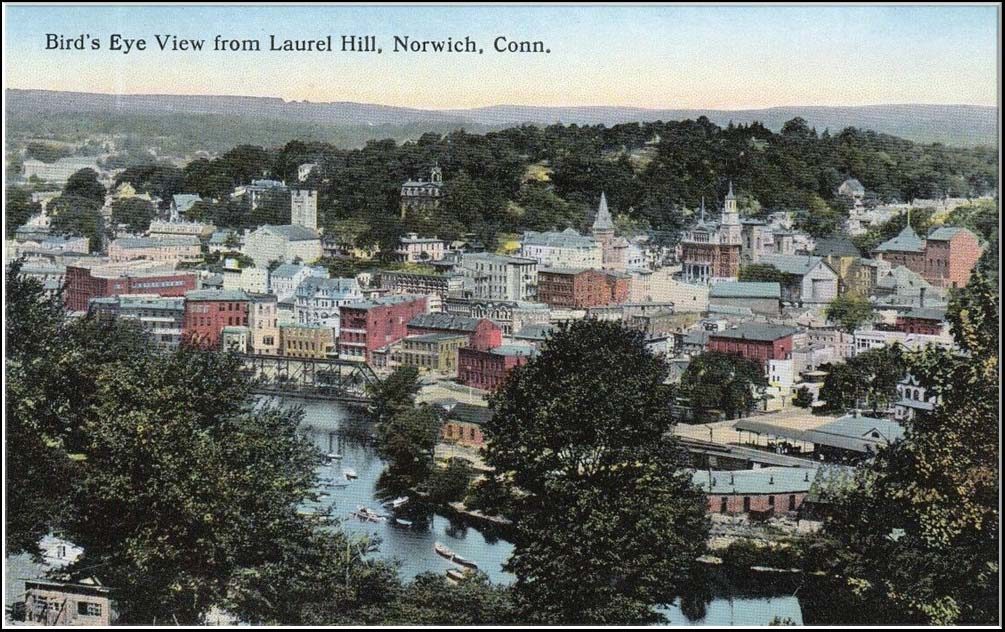John W. Stedman (1820-1896)

John Woodhull Stedman was a printer, educational advocate, and banker who lived and worked in Norwich from 1844 to 1874.
Growing up in Hartford, John was interested in all things associated with printing from an early age. After reading Benjamin Franklin’s autobiography, he decided that he would become a printer.
His plan was set into action at the young age of thirteen, soon after his father’s death. John began working at Philemon Canfield’s printing facility in Hartford. Canfield’s operated the largest press in Hartford in the 1830s. They produced books, children’s stories, and maps.
John’s first job was as a “roller-boy”. The roller-boy’s job was to bring a supply of ink that was rolled onto the printed matter. As time progressed, he performed general work around the office and later, by the age of 16, was promoted to the position of office foreman.
When John W. Stedman moved to Norwich in 1844, he purchased the Aurora newspaper. It took him ten years to pay for the newspaper. When he bought the Aurora it was a failed operation. The previous owners had abandoned the wholly broken-down business.
Stedman restored and revived the Aurora through hard work, knowledge, experience and integrity. He published the Aurora for more than twenty years, from 1844-1865. The contents of his weekly newspaper reflected Stedman’s strong Democratic political viewpoints. The published ideas were often in stark contrast with another of Norwich’s newspapers at the time, the Courier, published by John Dunham at that point-in-time.
He also published several books while in Norwich. In 1859 Norwich celebrated its 200th Jubilee. His book, “The Norwich Jubilee – A Report of the Celebration at Norwich, Connecticut on the 200th Anniversary of the Settlement of the Town, September 7th and 8th 1859” expertly chronicles the activities of the celebration.
In 1860 he began publishing an annual City Directory in Norwich. John Stedman retired from the printing business in 1868, but, the successors of his enterprises continued to publish the directory. An example of one of the directories published is the “Stedman’s Directory of City and Town of Norwich and Preston Connecticut“.
In the spring of 1852 Stedman represented the 3rd Congressional District at the Democratic National Convention. The purpose of the convention was to nominate a Democrat candidate for President and Vice-President of the United States.
During his residence in Norwich, John W. Stedman took a deep interest in the cause of common school education. His vivid recollection of the inadequate educational advantages experienced in his youth had deeply impressed him with the importance of a thorough schooling for the young. He served on the Board of Education in Norwich. For many years, he was annually elected as the president and executive officer without opposition.
He was also involved in the banking industry in Connecticut. He served as a bank commissioner of the state in the 1850-1853 time period. Mr. Stedman served as the Norwich’s Postmaster from 1853-1858.
He married Caroline Jameson Stedman in 1844 in Hartford. They had no children.
John Stedman died in 1896 due to a heart condition. He is buried in Hartford.
Acknowledgements
Stedman Families Research Center
The Connecticut Quarterly Magazine, 1896, Vol. 2, p 38
The complete list of sources may be found by clicking the “Bibliography” button, and, then typing “John Woodhull Stedman” in the SEARCH box.
Henry Bill (1824-1891)

Henry Bill, a prominent resident of Norwich, was a book publisher, a State Senator, a bank president and a land developer who laid out and developed the Laurel Hill neighborhood in Norwich.
In 1891 Info Source 1 stated :“Mr. Bill is one of the best products of our old Connecticut institutions, self made, self reliant, strong to execute whatever he plans, a good citizen, a good neighbor and friend, and one who will leave a lasting mark for good upon the community where he has passed the active period of his life.”
Henry, son of Gurdon and Lucy Yerrington Bill, was born in Ledyard and prior to the age of fifteen he led an ordinary life of a farmer’s boy in the summer and attended public school during the winter months. He was for a short time, an apprentice in a printing office in New London. But, not being satisfied with the profession, he abandoned it and engaged in school keeping in the neighboring town of Preston. He then engaged in school teaching in Plainfield and Groton during the winter months and assisted his father on his farm in the summer.
At the age of twenty Henry entered the field as a book salesman. He traveled for three years throughout the Western States in this business. In 1847, having acquired a practical knowledge of the book business, he returned to Norwich and established a subscription book publishing business.
For more than twenty five years he followed this business with great success, employing hundreds of salesmen, in all parts of the country, distributing some of the most useful and popular books of the day. The illustration shown above provides a view of his publishing office in Norwich. Also shown are three pages from an Illustrated Bible that was published by his company.
The Illustrated Bible contained more than 300 illustrations. The illustrations shown above were engraved by French artist, Paul Gustave Christophe Doré in 1866.
The company published beautifully illustrated books such as “An Illustrated History of the Holy Bible”, “The Young People’s Illustrated Bible History”, ”A Pictorial History of the New World”, “Illustrated History of Washington and His Times”, and “The History of the Civil War in America”.

Mr. Bill married Julia O. Chapman of Groton on February 16, 1847. They had five children, however, only three survived infancy.
Their house, built in 1856, is shown on the left.
For more than thirty years he was a vice president of the Chelsea Savings Bank, and for two years was its president. He resigned that office on account of declining health. Since his youth he was a member of the Congregational Church, and since his residence in Norwich was a member of the Broadway Church.

Early construction, near the Shetucket River, consisted of large and handsomely landscaped lots. As part of his promotion of the area, Bill advocated for the construction of a toll-free bridge across the river, and built his own home prominently overlooking the river. The Laurel Hill neighborhood is now on the National Register of Historic Places.

Later in life he gave back to community in many ways. In 1893 he donated funds for the original Bill Library Building in Ledyard. That building has been expanded twice, once in 1971 and again in 1982.
Henry Bill and his wife Julia are laid to rest in the Yantic Cemetery.
Acknowledgements
“Illustrated Popular Biography of Connecticut,” pp 65-66, (1891), compiled by J.A. Spalding
“An Illustrated History of the Holy Bible,” (1872), pgs 418, 263, published by Henry Bill
FindAGrave.com
The complete list of sources may be found by clicking the “Bibliography” button, and, then typing “Henry Bill” in the SEARCH box.